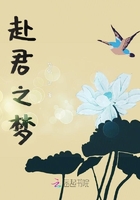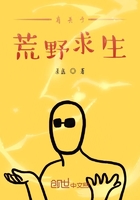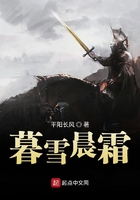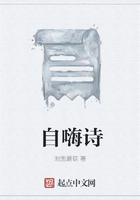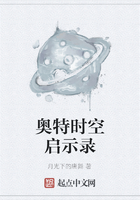The ranking of vegetable crops in terms of percentage increases in crop area allows us to detect two patterns of choice implied by the hypothesis of increased farming intensity. First, we find the more frequent choice of a crop (higher percentage increase in crop area) which takes a shorter time to grow. This pattern is particularly clear in comparing items 1,9, 13, and 14. In general, stem (item 1) and leaf (item 9) vegetables grow faster than fruit (item 13) and root (item 14) vegetables. With a few exceptions which may be explained by another detected pattern, the growing time as a criterion of choice is also clearly shown by comparing vegetables of the same type: for example, among the listed root vegetables the highest ranked, radish (item 4), is noted as the fastest growing, whereas ginger (item 19) and dasheen (item 20) are "notoriously" slow; among fruit vegetables the highest ranked, tomato (item 6), perhaps grows the fastest; and among stem vegetables the lowest ranked, water convolvulus (item 17), is notably slow growing.[20]
Second, we find the more frequent choice of a crop which costs more to cultivate. Take Chinese cabbage and cabbage, for example; both crops require roughly the same growing time (about 95 days). But it is estimated that Chinese cabbage (item 2) requires 354 labor days for the cultivation of one acre, compared with 256 labor days for cabbage (item 5).[21]
The "time" and "cost" criteria of vegetable crop choice can be resolved into one: the maximization of income from land subject to a higher tenant cost constraint under the share restriction.
Under a competitive market, and provided that a crop is grown, a higher cost of production is associated with a higher value. Given the same growing time for different crops, those added more frequently at the margin under the share restriction were those which had a higher planting cost. On the other hand, given the same cost requirement of cultivation, the marginal crops more frequently added were those which required a shorter time, so that the given land could be released sooner for other crops. Both choices are implied by my theory, the results of a tendency toward the maximization of gross crop value rather than the crop value net of nonland costs.
[1]. See, for example, Cheng Chen, Record of Taiwan Land Reform, chaps. 1 and 2; JCRR, "JCRR Annual Reports," chaps. 1 and 2. Note that within paddy fields or dry land, the land prices vary according to soil grades and locations. In general, prefectures with higher rental percentages were associated with higher land prices. As was discerned in chap. 2, however, the market rental percentage depends not only on the fertility of land and the cost of farming, but also on the input commitments shared by the contracting parties. Although the price of land is the more appropriate measure for land fertility, for our present purpose the initial rental percentage is the relevant measure.
[2]. See Peterson, "Economic Study of Land Use."
[3]. The market rentals reported for these three prefectures usually range from 50 to 70 percent of the annual yield, though on some tenant farms a 90 percent rental share was observed. See Chen, Records of Taiwan Land Reform, chaps. 1 and 2; and JCRR, "Annual Reports," chaps. 1 and 2.
[4]. See the footnote attached to table 4 for prefecture delineation,
[5]. In 1948, the number of workers per tenant household was as follows: Sinchu, 7.28; Taipei, 6.97; Taichung, 6.21; Kaoshiung, 6.03; Tainan, 6.05; Hwalien, 6.32; Taitung, 5.21; and Penghu, 3.28. See DAF, Yearbook 1949, sec. 2.
[6]. Theoretically, the maximization of yield value per acre of land implies that the marginal product of tenant input has fallen to zero. Here we are only concerned with the tendency toward this condition.
[7]. It is reported that some tenants grew citronella illegally on the external land margin owned by the state. The crop area for citronella has declined since 1951, and particularly after the Land-to-the-Tiller program in 1953, so much so that the JCRR considered subsidizing its cultivation in 1960. See DAF, Yearbook 1958, sec. 3. 1. 18; and Shen, Agricultural Development on Taiwan, p. 108.
[8]. That is, during the share restriction the increase in crop area of citronella planting (faster rate) was proportionately greater than the decrease in crop area (hectare) yield, which led to a higher total output on the given land.
[9]. See Lu, Analysis of Farm Family Economy, p. 124; Shen, Agricultural Development on Taiwan, chap. 8 and particularly pp. 155-64; DAF, Yearbook 1948-52, sec. 3, 2; and Young-chi Tsui, A Study of Peanuts in Taiwan (Taipei: JCRR, 1954).
[10]. See Shen, Agricultural Development on Taiwan.
[11]. Tsung-han Shen, Agricultural Resources of China (New York: Cornell University Press, 1951), p. 220. This particular paragraph refers to peasants in Canton, China.
[12]. Unlike citronella, the hectare yield for the marginal crops listed in tables 6 and 7 usually started to decline in 1949, with the lowest hectare yield realized either in 1950 or in 1951. See DAF, Yearbook 1952, Sec. 3. 4. B. Both for clarity of presentation and for ironing out occasionally "erratic" output changes inherent in agriculture, the averages of a three-year period (1949-51) are used. Since the share restriction was imposed in April-June 1949, the confirmation of my hypothesis would be more critically displayed if these averages were taken for 1950-51.
[13]. Shen, Agricultural Resources of China, chap. 24.
[14]. On the average, the labor required to plant one crop hectare of vegetables is about seven times greater than for a common crop, and about five times greater than for a special crop. See Lu, Analysis of Farm Family Economy, p. 142, table 121.
[15]. Ibid. According to Lu, the labor required to cultivate green manure is about one-fiftieth of that required for vegetables.
[16]. A condition implied by a competitive market. For the market values of vegetables and other crops, see DAF, Yearbook 1952, sec. 3. B.






